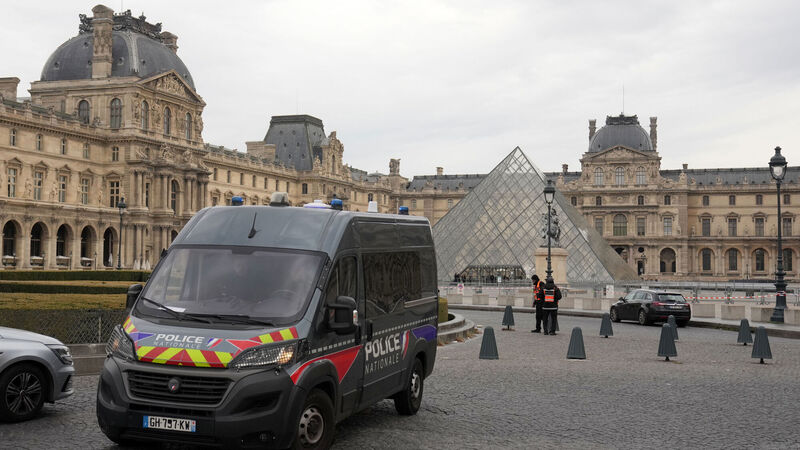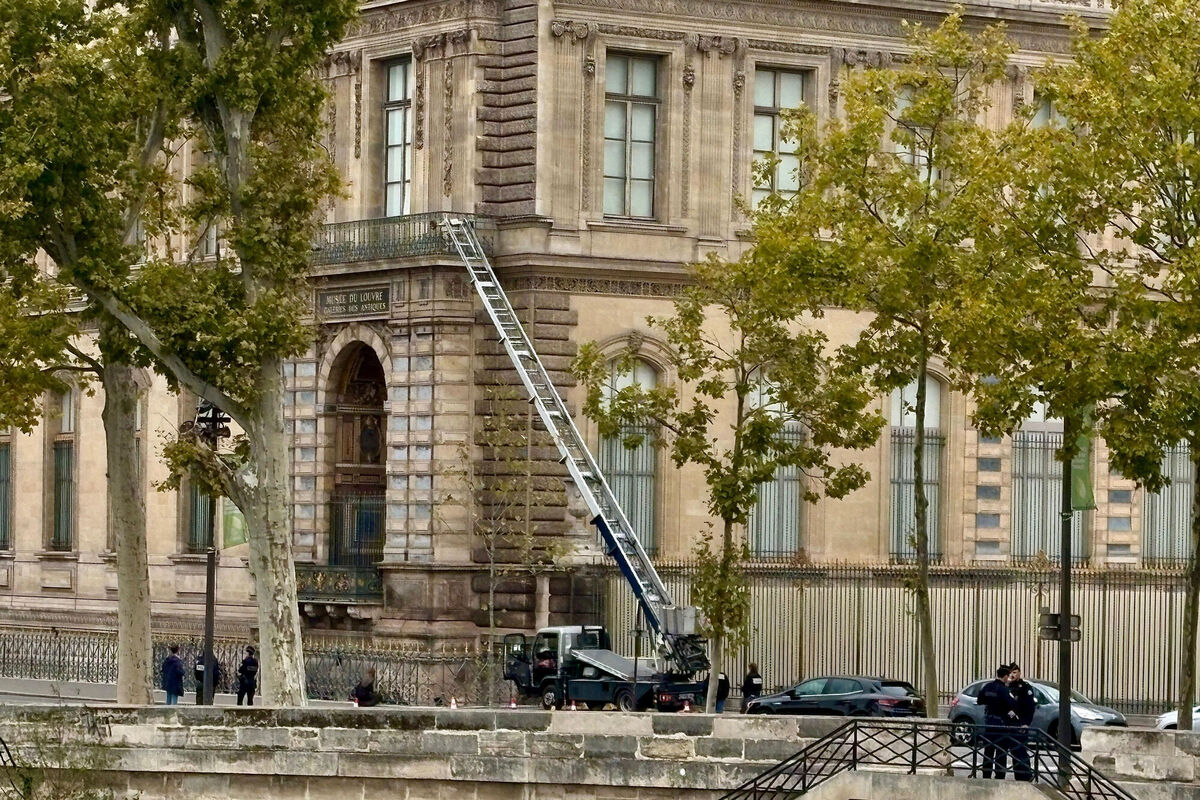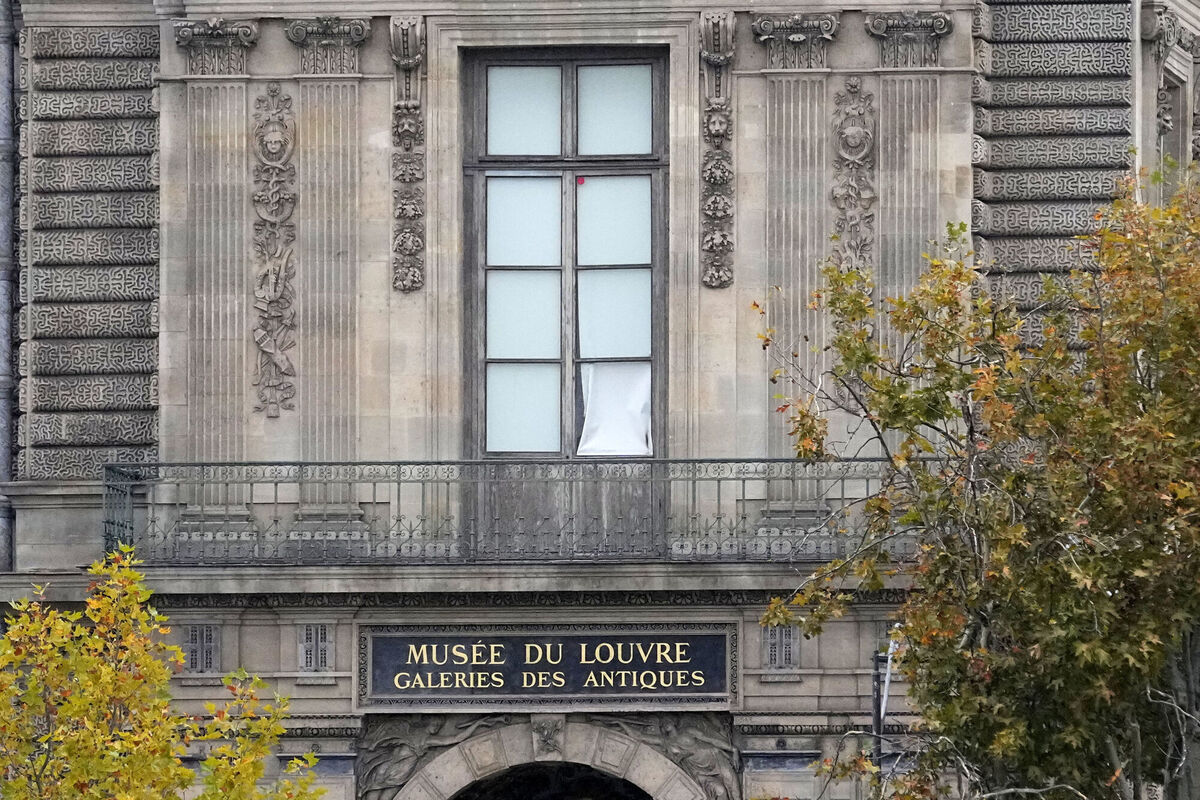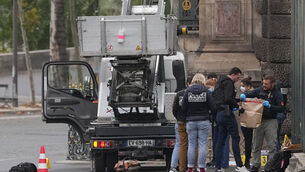Louvre museum robbery: How the thieves broke in, what they stole and what happens next

A police car patrols in the courtyard of the closed Louvre museum after a robbery on Sunday. Picture: AP Photo/Thibault Camus
The Louvre — the world’s most-visited museum — was closed suddenly on Sunday after a break-in at its Apollon gallery, the home of the French crown jewels — part of a daring daylight heist that saw priceless Napoleonic jewels stolen.
As French police hunt the thieves who stole eight pieces of historic jewellery, questions are being asked about how they did it and who would be in the market for “priceless” items, including a necklace Napoleon gave to his wife.
In a highly professional daylight raid, four balaclava-clad thieves pulled up outside the Louvre on a road along the Seine river. About 9.30am — about half an hour after visitors began entering the front of the museum — the thieves were at the south side of the building, in a truck with a basket lift and an extendable ladder, rising to a second-floor balcony window.
Here, they broke in using an angle grinder and other power tools, authorities said.
They smashed glass displays, grabbing the precious jewellery, but as alarms rang out in the museum alerting guards, the robbers quickly left, escaping on motorbikes. The entire caper took less than 10 minutes, according to French interior minister Laurent Nunez.
He said it was the work of “an experienced team who had clearly scouted the location”.

The French culture ministry said eight pieces were stolen — but not the hugely valuable crown of Napoleon III’s wife, Empress Eugenie, which the thieves dropped on their way out. They also missed the Regent diamond, valued by Sotheby’s at more than $60m (€51.4m), which was also in the gallery.
The other stolen pieces include a tiara, earrings and a sapphire necklace from the jewellery set of Queen Marie-Amélie and Queen Hortense, and pieces of jewellery from the Marie-Louise set.
They were housed in the Apollon gallery, which was built in 1661 by Louis XIV. The finished hall, full of gold leaf and paintings, would be the model for the Palace of Versailles’ world-famous Hall of Mirrors.
The heist instantly spilled into politics. Far-right leader Jordan Bardella used it to attack president Emmanuel Macron, who is facing a fractured parliament.
“The Louvre is a global symbol of our culture,” Mr Bardella wrote on X. “This robbery, which allowed thieves to steal jewels from the French Crown, is an unbearable humiliation for our country. How far will the decay of the state go?”
Mr Macron said France would “recover the works, and the perpetrators will be brought to justice”, also saying: “The theft committed at the Louvre is an attack on a heritage that we cherish because it is our history.”
“It’s a major robbery,” Mr Nuñez said, noting that security measures at the Louvre had been strengthened in recent years and would be reinforced further as part of an upcoming multimillion-euro overhaul plan at the museum.

Security around marquee works remains tight — the Mona Lisa sits behind bulletproof glass in a climate-controlled case — but Sunday’s theft also underscored that protections are not uniformly as robust across the Louvre’s more than 33,000 objects and the theft is a fresh embarrassment for a museum already under scrutiny.
Louvre visitor Magali Cunel, a French teacher from near Lyon, expressed what many were thinking: “How can they ride a lift to a window and take jewels in the middle of the day? It’s just unbelievable that a museum this famous can have such obvious security gaps.”
The Louvre has a long history of thefts, possibly the greatest being by an Italian decorator who briefly worked there and who stole the Mona Lisa in 1911. Vincenzo Peruggia entered the museum dressed to look like a museum worker. When no one was looking, he removed the painting and snuck out. He was later arrested and the painting recovered.
Another notorious episode came in 1956 when a visitor hurled a stone at her world-famous smile, chipping paint near her left elbow and hastening the move to display the work behind protective glass.











